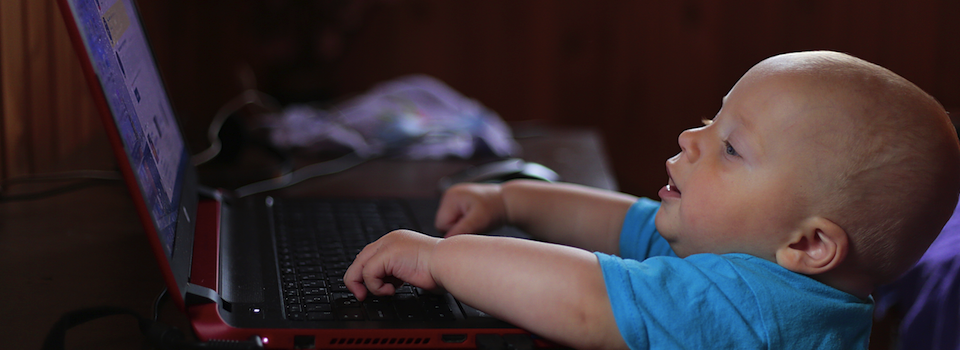It’s becoming increasingly common for children to have their own laptops, tablets or smartphones, but just because your child owns one or more Internet-enabled devices, doesn’t mean you’re comfortable with them seeing everything that the Internet has to offer.
Apple include a range of parental controls in each release of macOS, and Sierra is no exception. However, on the Internet inappropriate content is only ever a click away, so many parents naturally want some extra assurance that their children can’t access any disturbing, inappropriate or explicit content.
In this article, I’ll be showing you how to block adult content at the click of a button, using OpenDNS Family Shield.
What is DNS blocking?
OpenDNS is a DNS server that translates user-friendly URLs into the the IP addresses that your Mac uses to actually connect to different websites.
Every Internet provider supplies their own DNS that your Mac and other Internet-enabled devices use by default, but you can manually change your DNS server at any time. There are many reasons why you might switch to a new DNS server, but the most popular are boosting the speed of your connection, and gaining access to additional features, such as Family Shield’s parental controls.
The benefit of using a DNS blocking service, is that it isn’t limited to a single device. By changing the DNS server for your home router, you can prevent any device from accessing inappropriate content on your home network. If you do change your the settings for your router, then regardless of whether your child is surfing the web on the family laptop, their own personal iPad, or using their Android smartphone, you can be confident that content-blocking will be in effect.
In this article, I’ll show you how to change the DNS settings for an individual Mac, before looking at how to change the DNS server for your home router.
Before we begin, just be aware that although OpenDNS Family Shield does block all major porn sites, your child may still be exposed to adult content on websites that aren’t categorised as adult sites, such as Twitter, Reddit or Facebook. For the best results, you should use OpenDNS in conjunction with other parental controls.
Switch a single Mac to OpenDNS
To setup content blocking on a specific Mac:
- Open your Mac’s ‘System preferences…’ and select ‘Network.’
- In the left-hand menu, select the interface that you use to connect to the web, such as ‘Wi-Fi’ or ‘Ethernet.’
- Click the ‘Advanced…’ button.
- Select the ‘DNS’ tab.
- Click the ‘+’ button directly beneath the ‘DNS Servers’ list.

- Enter either of the following DNS server addresses:
208.67.222.123
208.67.220.123
- Click ‘OK.’
- Back in the main ‘Network’ window, click ‘Apply.’
To make sure your Mac is using these new DNS settings, it’s recommended that you flush the DNS cache. You flush the cache by opening a Terminal window (‘Applications > Utilities > Terminal’) and then running a Terminal command. The exact command will vary depending on your version of macOS, so work your way through the following commands until you find one that works for you:
sudo killall -u _mdnsresponder mDNSResponder
sudo killall -HUP mDNSResponder
sudo dscacheutil -flushcache; sudo killall -HUP mDNSResponder.
To check that OpenDNS Family Shield is setup correctly, head over to their Testing page and the InternetBadGuys.com demo page. Both of these sites should now be blocked.

Switch your router to the OpenDNS servers
It’s becoming increasingly common for children to have access to multiple Internet-enabled devices, so even if you setup their laptop to use OpenDNS, your children may still encounter inappropriate content on other devices.
You can prevent your children from viewing inappropriate content on any device that’s connected to your home network, by switching your router to use the OpenDNS server. Although this approach does offer increased protection, note that it won’t prevent your child from accessing inappropriate content on other networks, most notably the mobile data on their smartphones.
In this section, I’ll be outlining the general steps you’ll need to take, in order to change your router’s settings. Some details may vary depending on your particular router, so if you encounter any difficulties, then consult your router’s user manual for more information.
- Find your router’s IP address by navigating to ‘System preferences > Network > Advanced.’
- Select the ‘TCP/IP’ tab; you’ll find your router’s address next to ‘Router.’
- Enter this address into your web browser, which should launch the settings for your particular router.
- Next, you’ll need to hunt down an area where you can enter some new DNS settings. This location varies between routers, so if you can’t find a tab or menu item that’s explicitly labelled ‘DNS,’ then look for an ‘Advanced’ or ‘My Network Settings’ section.
- Once you’ve found this section, look for one or more fields where you can enter two sets of numbers, and copy/paste the following into these fields:
208.67.222.222
208.67.220.220
- Click ‘Save’ or ‘Apply.’
- To make sure your DNS configuration settings take immediate effect, flush your cache using one of the following Terminal commands:
sudo killall -u _mdnsresponder mDNSResponder
sudo killall -HUP mDNSResponder
sudo dscacheutil -flushcache; sudo killall -HUP mDNSResponder.
- Try to access the OpenDNS Family Shield’s Testing page and the InternetBadGuys.com demo page across several devices that are connected to your home network; both of websites should now be blocked across all your devices.






Add Comment